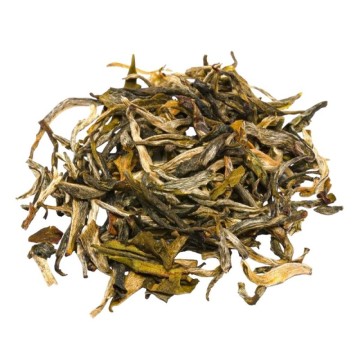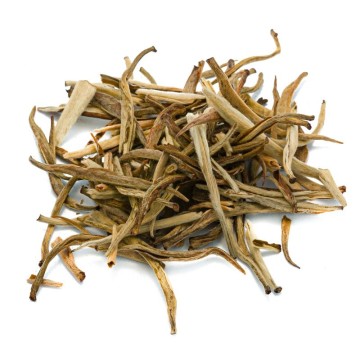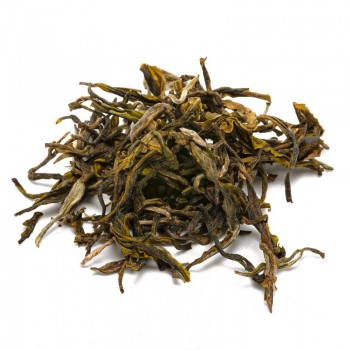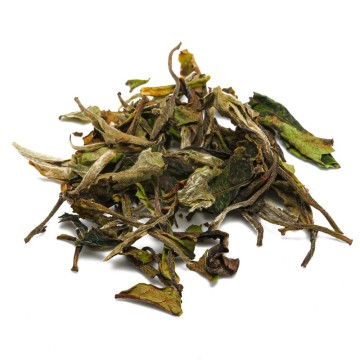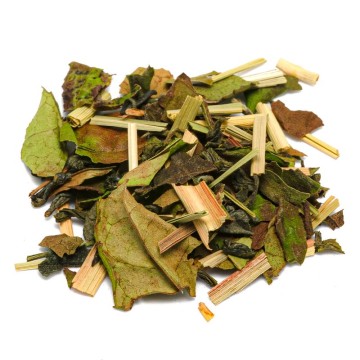The combination of fine white teas makes this blend unique and beneficial, rich in flavor and antioxidants at the same time. The union of various types of white tea leaves creates a soft and delicate base flavor, but complex in its fruity and refreshing notes. The blend is not flavored, ensuring the authentic flavor of these white teas, among the noblest and most valuable. The silky texture makes this blend pleasant for a refined and enjoyable break during the day. An ideal blend for special moments and hospitality, given the "superior" value of its teas.
What are the white teas in this blend?
The elements that make up this exceptional blend combine together to enhance the beneficial effects and flavor of Chinese white tea in different shades.
Pai Mu Tan (White Peony) white tea provides the flavor of the freshest leaves and shoots of the plant, processed little to preserve all the antioxidants and nutrients contained.
China Chun Mee green tea provides a slightly sour taste and fruity notes, perfect in combination with the white teas of the blend.
Mao Feng white tea represents a superior quality, known for its smooth flavor and velvety texture, with delicate peach notes and a light floral aroma.
China Jasmine Dragon Pearls provides its pearls full of floral sweetness, adding the aroma of jasmine flowers to the blend.
China Jasmine Silver needle is also one of the most prized white jasmine teas with its silver tips, which reinforces the intoxicating and invigorating aroma of the blend.
What are the benefits of white tea?
The Superior Blend provides all the benefits of this type of tea, which provides many healthy compounds thanks to the reduced processing of its leaves. Both the Pai Mu Tan and Mao Feng tea varieties are rich in antioxidants and polyphenols, which counteract the harmful action of free radicals and cellular aging. In addition, the blend contains Chun Mee green tea: the combination of white tea and green tea increases the presence of catechins and other compounds that stimulate attention, concentration, help the metabolism, facilitating weight balance. The blend of white teas also facilitates digestion, intestinal transit and the development of healthy bacteria. Its soothing action in case of nausea and slow digestion is also enhanced by the relaxing aroma of jasmine. In addition, white tea also has diuretic properties, which help eliminate excess fluids and toxins from the body. In addition, this superior white tea blend provides vitamins and minerals useful to the body.
Buy the Superior Blend white tea blend
This combination of fine and beneficial teas can be found in our Natura d'Oriente selection, among the white teas for sale online. We offer this blend of loose leaves, mixed with different varieties of white tea, in convenient freshness-preserving packs of 25 g, 50 g, 100 g, 150 g.
How to prepare white tea?
Insert about 3-5 grams of the mixture into a cup (250 ml) (strainer or infuser), depending on your preference for intensity. Use water at a temperature of about 70 °C, pouring it into the cup and leaving the tea to infuse for 2 to 3 minutes.
Where does the blend of white teas come from
Blends of different teas were born in ancient times to mix flavors, aromas and consistencies in a single cup of tea. Furthermore, blending tea allows you to maintain consistency between types, as for the blend of white teas, or by region, year of cultivation, etc. By mixing the various ingredients of the blend, surprising results are obtained both in terms of taste and health characteristics (more antioxidants, for example). Chinese tea blends have been known for over 2000 years, mentioned in the first known book on the subject "The Classic of Tea" by Lu Yu (around 760 AD). At that time, there was already talk of the ingredients that can be added to tea, especially herbs and medicines, and implicitly also of the addition of similar teas. Two of the most famous centuries-old blends are jasmine tea and Earl Grey tea, which were born more recently, while in some Chinese areas orange peels were mixed into the tea, while in Tibet it was common to add yak butter and salt. The history of mixing different teas, however, accelerated in the 19th century, when tea became increasingly popular in Great Britain, and various combinations began to be experimented with. While this has happened mainly with black tea and at a commercial level, also for other types of loose leaf teas, fine blends are practiced, such as for superior blend white tea. In this case, different types of tea have been combined, including green Chun Mee, to create a combination that expresses the best qualitiesof each variety.
What are the side effects of white tea?
It is recommended to drink this tea in moderate doses, as it may cause side effects associated with the presence of caffeine. Although it is contained in smaller quantities than other teas, it can affect those sensitive to caffeine by stimulating nervousness, difficulty falling asleep, accelerated heartbeat, headache, diarrhea, heartburn. In addition, an excessive dose of white tea can trigger the effects of tannins such as nausea and vomiting. It is advisable to take this tea blend in moderation (1-2 cups per day).

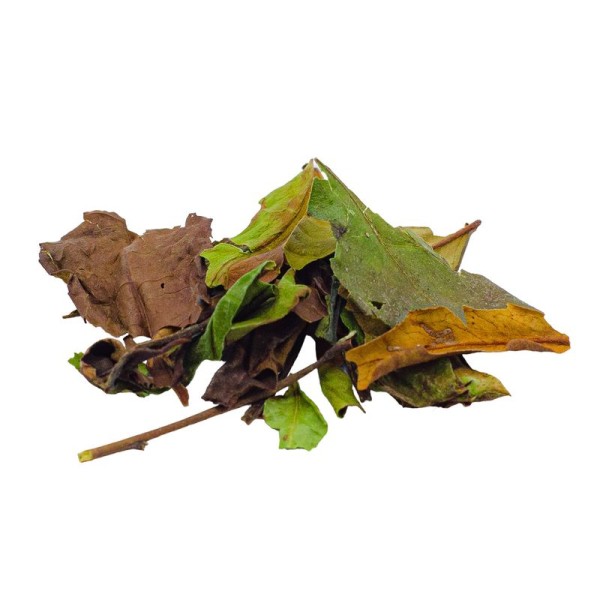









 No reward points for this product.
No reward points for this product.
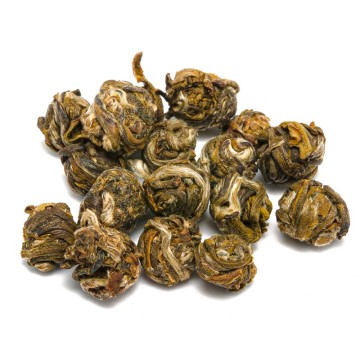
![tea white orange spices [Natura d'Oriente]](https://www.naturadoriente.com/3364-home_default/white-tea-orange-and-spices.jpg)
